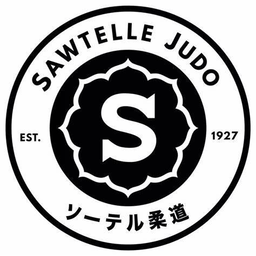Judo-Its Origins
Before we start looking back into the history of Sawtelle Judo Dojo, we will explore into the origins of Judo and its founder, Dr. Jigoro Kano. Judo is the modern adaptation of Jujutsu, one of the ancient martial arts and qualities traced back to the samurai warriors of medieval Japan.
So, the chain of development for Judo could be interpreted as the following.
First, Chikara-kurabe – Sumo(sumai) – Kumiuchi – Kogusoku, Yawara, Kowami, Taijutsu, Hade, Goho, Koppo, Koshi no Mawari, Hakuda, Kenpo, Shubaku– Jujutsu – Judo. These were preceded by ancient forms of wrestling and hand-to-hand combat, such as Pankration, Bökh, and the many unnamed forms depicted in cave drawings dating back 15,000-20,000 years.

(Photo courtesy of Origins of Jiu-Jitsu)
Judo roots can be traced back the third Century B.C. to Chikara Kurabe, a test of strength where two men would grapple in hand-to-hand combat which resulted in the death of an opponent. This was during a period when bow and arrows were used, and swords and spears were used in close combat well before the advent of firearms.
The jiu-jitsu originated in India more than two thousand years before Christ, through the caste of kshatrias (noble warriors who dominated society) who practiced an old fighting system called Vajra Mushiti (wrist or wrist real diamond), whose origins date back to the Indo-European peoples who inhabited Central Asia for 4000 BC.
(Photo courtesy of Google)
(The following is from article on Infobase on Jiu-Jitsu, translated from Portuguese to English.)

(Photo courtesy of Mardb.com-Martial Arts Database)
Siddhartha Gautama, the Buddha (500 BC), a prince of the Shakya clan kshátria was vajramushiti champion after his enlightenment and continued his practice with spiritual objectives and circulated it among their followers.

Buddha monument in Kamakura, Japan, southwest of Tokyo
(Photo courtesy of Japanese Buddhist Statuary)
With the spread of Buddhism throughout Asia, an Indian prince, another follower of Buddhism, was invited by the Chinese emperor in 538 BC to restore the precepts of their religion in that country. This Indian prince became the 28th patrician Buddhist doctrine, giving rise to Chan; his name was Bodhi Dharma (Tamo in Chinese and Daruma in Japanese). He stayed at the Buddhist temple of Shaolin Chinese, where the Vajira Mushiti merged with the leading local martial arts kung fu Shaolin (Shorin Kempo in Japanese).

(Photo courtesy of Cultural China)
Twelve years after the arrival of Bodhi Dharma to China, Buddhism came to Japan, which contributed to this new martial art (kung fu Shaolin) mingling with the struggles of Japan (chikara kurabe kumi uchi and who had the legendary Japanese wrestler, Nomi in Sukune, its great hero in the struggle of life or death took place in 24 BC) giving rise to jiu-jitsu. The Chinese influence on Japanese jiu-jitsu has continued over the next few centuries, as we see below, transforming itself into a weapon of war in the hands of the samurai:
838 to 847, the Japanese monk Einin traveled to Shaolin Temple where he studied martial arts and philosophical precepts, then returned to Japan
12th Century, arrived in Japan Chan Buddhism, which is now called Zen
In the 17th Century, the Chinese monk Chang Ping Yuan taught his self-defense technique to three samurai: Fukuno, Isogai, and Miura. These samurai are considered the fathers of modern jiu-jitsu. Shirobei Akiyama, a Nagasaki doctor, traveled to China to learn martial arts techniques. When he returned to Japan, he withdrew to the mountains to meditate, where he created his style, which has as its principle “yield to win. “
In 1603, the shogun (military dictator) Tokugawa Ieyasu unified Japan with an iron fist, putting an end to conflicts between various clans’ samurai. At that time, over a hundred styles of jujitsu were cataloged as weapons that lasted until the end of the samurai of feudal Japan in 1867.

Sumo Grand Champion, circa 1600’s
(Image of woodblock courtesy of Wikipedia)
Akashi Shiganosuke (明石 志賀之助) (c. 1600 – c. 1649) was officially acknowledged as the first sumo wrestler to hold the title of yokozuna. A legendary figure, his historical existence is disputed.[1] He is said to have been active in the Kan’ei era (1624–1643).[1] He was described as gigantic, 2.58 m (8 ft 6 in) tall and weighing 184 kg (410 lb).

Former Yokozuna, sumo’s highest ranking
He is 6’4” 340 lbs. and he is not even close to being the biggest Sumotorisan, Sumo wrestler, in modern times.
For “The Road to Sawtelle Judo Dojo, Part 1”
Comments function disabled




Leave a Reply